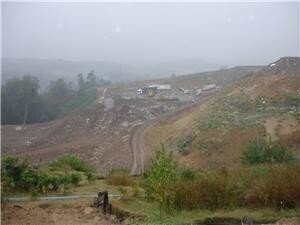Gas Detection
Updates to Gas Detection
Mar 11 2013
CoGDEM (UK) is the Council of Gas Detection and Environmental Monitoring, a trade association with a membership of over fifty companies involved in the gas detection industry. We are pleased to have ILM/ETP (the publishers of this IET magazine) as an Associate Member, so we will place a regular column of news from the gas detection industry in IET magazine.
One of the key advantages of belonging to a trade association is to get advance notice of changes to standards. Several of CoGDEM’s member companies are busy contributing to the huge task of a complete revision of the European standard EN 45544, which governs the performance requirements and testing of toxic gas detectors used in workplace environments. The standard is being completely restructured to make it a more useful document; compliance with this standard is likely to be more demanded by customers in the know. Similar European standards also exist for flammable gas detectors (EN 60079-29-1) and oxygen detectors (EN 50104), and the new version for toxic gas detectors will now use similar test conditions to these standards, giving a consistent approach across the board.
Another European standard with a very active Working Group is EN 50402, this covers the requirements for testing the Functional Safety of gas detection equipment. The reliability and integrity of such vital safety equipment is primarily governed by the design of the hardware and software embedded within the instrumentation, although the equipment’s installation and maintenance have an important part to play. For more information on this subject, consult CoGDEM’s new authoritative reference book, the ‘CoGDEM Guide to Gas Detection’ which was published towards the end of 2012. http://j.mp/SV3Zse
The UK’s Health & Safety Executive is starting a two-year project to investigate methane gas cloud behaviour and detection in a simulated offshore scaffolding rig being constructed at their HSL test facility near Buxton. The tests will involve a network of gas sensors mounted in a large three-dimensional grid, with a facility for releasing gas in the centre of the grid. As well as looking at the dynamics of the released gas, experiments will determine the abilities of the various gas detectors to correctly identify the presence of a moving cloud of gas under varying environmental conditions.
Away from the industrial world and into the UK domestic housing sector, it has been decided by the gas-fired boiler manufacturers that all boilers shall have their flue gas emissions checked at the point of commissioning. The use of Flue Gas Analysers (also known as Electronic Combustion Gas Analysers) to measure carbon monoxide, carbon dioxide and oxygen in the flue during maintenance activities has been commonplace for years, but until this year, most boiler manufacturers did not require such tests on brand new boilers. However, following on from investigations by the HSE after several serious CO poisoning incidents in recent years, tests during the commissioning of a brand new boiler are ‘recommended’ from April 2013, and will become mandatory from April 2014.
Digital Edition
IET 34.2 March 2024
April 2024
Gas Detection - Biogas batch fermentation system for laboratory use with automatic gas analysis in real time Water/Wastewater - Upcycling sensors for sustainable nature management - Prist...
View all digital editions
Events
May 20 2024 Columbus, OH, USA
May 21 2024 Lagos, Nigeria
May 23 2024 Beijing, China
May 23 2024 Beijing, China
May 29 2024 Beijing, China


-Medium.jpg)















